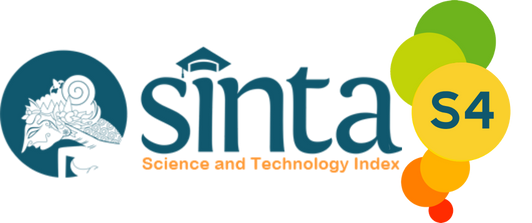EFEKTIFITAS PENGGUNAAN MEDIA LAGU DALAM PENGUASAAN GOI SISWA SMA
DOI:
https://doi.org/10.24036/omg.v7i1.660Abstract
This research is motivated by difficulties with remembering goi. This study aims to find out whether the use of song media is effective in mastering the goi of high school students. This research is a quantitative study with a pseudo-type of the experiment. The design used in this study is a posttest-only control group design. The population in this study was all students of class X social studies sman 1 X Koto consisting of 4 classes totaling 120 students. The sampling technique in this study used purposive sampling technique. The posttest-only sample in this study was class X social studies 1 which amounted to 30 students, divided into experimental classes of 15 students and control classes of 15 students. The instruments used in this study were in the form of an objective test of 20 questions and a 5-question fill-in test. Based on the hypothesis test at a significant level of 0.05, the results of the calculation of > ttabel (4.88 > 2.04 were obtained. So it can be concluded that the media of Japanese songs is effective against the goi ability of students of SMAN 1 X Koto.
References
Arikunto & Suharsimi. 2010. Prosedur Penelitian Suatu Pendekatan Praktik. Jakarta: Rineka Cipta.
______.(2016). Prosedur Penelitian Suatu Pendekatan Praktik. Jakarta: Rineka Cipta.
Arif S dkk. 2014. Media Pendidikan. Jakarta: Rajawali Pers.
Azhar, A. 2013. Media Pembelajaran. Jakarta: Rajagrafindo Persada.
Furqon, F.(2013).Correlation Between Students’ Vocabulary Journal in
Enriching Students’ Vocabulary Mastery and The Students’ Attitudes Toward Its Use. The Journal English and Education, 1 (1), 81-88.
Nasution, Sari TO., Fatimah, S., & Yulia, N. “Hubungan Menonton Anime dengan Kosakata (Goi) Mahasiswa Kelas XII IPS SMA Negeri 12 Padang Tahun Ajaran 2017/2018”. Jurnal Omiyage vol 1 no 1. Hal 1.
Pusat Bahasa. 2008. Kamus Besar Bahasa Indonesia. Jakarta: Gramedia. Sadiman,
Sanaky, AH. 2013. Media Pembelajaran Interaktif-Inovatif. Yogyakarta: Kaukuba Dipantara.
Siyoto, dkk. (2015). Dasar Metodologi Penelitian. Yogyakarta: Literasi Media Publishing.
Sudjianto & Dahidi, A. 2009. Pengantar Linguistik Bahasa Jepang. Jakarta: Kesaint Blanc.
Sugiyono. 2014. Metode Penelitian Pendekatan Kuantitatif, Kualitatif dan R&D. Bandung: Alfabeta.
______. 2015. Metode Penelitian Kombinasi (mix Methods). Bandung: Alfabeta.
Sutedi. 2004. Dasar-dasar Linguistik. Bandung: Humaniora.
Takamizawa, A. 2004. Hajimeteno Nihongo Kyouiku. Jepang: Japan Foundation.
Tarigan & Guntur, H. 2011. Pengajaran Kosakata. Bandung: Angkasa.
Yulia, N. 2010.” Bentuk Tsumori dan You To Omou yang menyatakan maksud : Kajian Struktur”. Jurnal Pendidikan Bahasa, sastra dan seni, Vol. 11(1), 37-49.
_______.2020. Students’ Mastery On Writing Kanji At Japanese language Education Study Program Of UNP. Jurnal Kata: Penelitian Tentang Ilmu Bahasa dan Sastra. p. 35-43.








